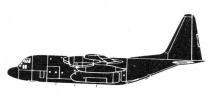Incident Overview

Description
The flight departed the Lule/Kallax airport at 1510 hrs. As the flight approached the Gllivare Airport the crew contacted the tower and were advised that runway 12 was in use. After passing the outer marker outbound in a full procedure approach to runway 12 they descended to 3300 feet. Having completed the inbound turn towards the airport the aircraft became established on the approach centre line far to late, causing the crew to commence a missed approach and to set up for a new procedure. The second approach was then established on the approach centre line. The crew extended the landing gear and selected the flaps to the first detent before descending towards the minimum descent altitude for the approach. The commander reported to the tower that they were on final and was advised that the high intensity runway lights were at 100%, that the wind was blowing from 150 degrees at 13 knots, gusting to 21 knots and that the runway was free. As the aircraft was descending through 2400 feet it started to drift off the approach centre line to the right, which the co-pilot corrected for. The commander then made visual contact with the runway. As the co-pilot turned back towards the centre line and made contact with the runway lights he noticed that the aircraft was approaching a little to low and corrected by raising the nose, causing the speed to decrease. Shortly before passing the runway threshold the commander noticed that landing flap had not been selected whereby he extended the flaps to the correct position. The co-pilot attempted to correct for the trim change caused by extending the landing flaps by abruptly lowering the aircraft nose from a few meters height. The commander attempted to counteract the increased sink rate by increasing thrust on the engines. The aircraft made a hard landing. Before turning off the engines the aircraft de-icing boots were used to remove a 6-7 mm. thick layer of ice from the wing leading edge. During a later inspection of the aircraft structural damage was discovered. The accident was caused by improper speed control during the landing, which was carried out in difficult weather conditions. The commander?s lack of supervision during the approach and landing combined with the co-pilot?s inexperience with night flying were also contributing factors
Primary Cause
Improper speed control during the landing, compounded by inadequate approach procedures and insufficient coordination between the pilot and co-pilot.Improper speed control during the landing, compounded by inadequate approach procedures and insufficient coordination between the pilot and co-pilot.Share on:





